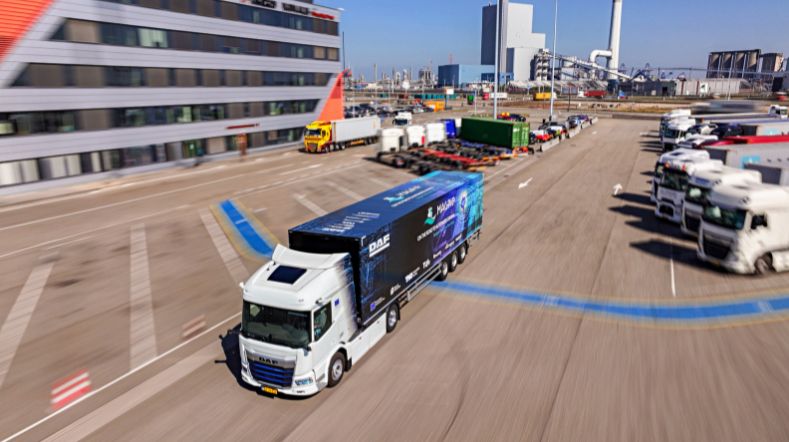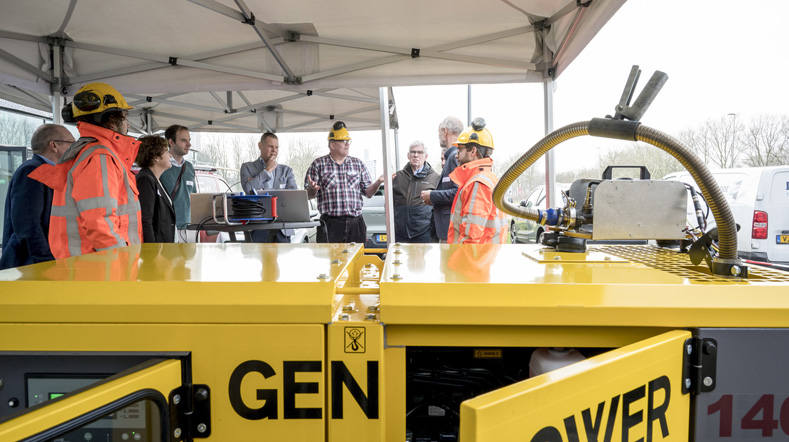
Reducing CO2 in logistics
Making our mobility largely carbon neutral by 2050 will require far-reaching measures for logistics. At TNO, we’re helping public authorities, municipalities, provinces, and logistics service providers make this transition. By providing surprising insights and advice based on innovative research, tools, and methodologies.
CO2 emissions of logistics in the Netherlands
What is the current CO2 impact of our logistics sector? To get a clear picture of this, TNO was commissioned by Top Sector Logistics to map out CO2 emissions from all transport movements in the logistics sector in the Netherlands.
Carbon footprinting offers insight
Carbon footprinting can be used to map out CO2 emissions from transport and logistics. You can also estimate the effects of decarbonisation measures prior to their implementation or monitor them afterwards. At the operational (micro) level, this tool allows logistics service providers to design their processes to not only optimise their costs, but also reduce CO2 emissions. At the strategic (macro) level, carbon footprinting helps public authorities develop policies that contribute to CO2 reduction within this sector.
Carbon footprinting in practice
Various methodologies, calculation modules, and tools exist for carbon footprinting. Based on fuel or energy consumption and transport performance data, the CO2 impact of a logistics provider is calculated. TNO is contributing to optimising such methodologies and tools through various projects.
Discover the projects
Various carbon footprint methodologies exist. Several parties are also developing calculation modules or tools for determining the carbon footprint. These tools use fuel or energy consumption and transport performance data to calculate the carbon footprint of logistics service providers. We contribute to the development of several of these methodologies and tools in various projects
COFRET
In the COFRET (Carbon Footprint of Freight Transport) project, top European scientists developed a widely applicable methodology for determining greenhouse gas emissions in transport chains.
LEARN
In LEARN (Logistics Emissions Accounting and Reduction Network), we applied carbon footprinting in practice with several international project partners. This has highlighted what data are needed and how to combine data from different companies.
Lean & Green
In the Lean & Green programme, we assessed and monitored companies’ CO2 reduction plans as an independent party. At the request of Connekt, we also mapped out the opportunities for harmonisation of various carbon footprinting methods and tools (pdf).
Decamod offers insight into impact
How much can different logistics segments contribute to CO2 reduction? What is the potential impact of cleaner drives and fuels? What can we save if we make logistics processes more efficient? And what is the impact of national or regional policies? To answer such questions, TNO developed the Decamod toolbox.
This toolbox offers insight into the sources of CO2 emissions within the logistics sector at different levels. Geographically (nationwide or regional), by sector (specific sectors or logistics as a whole), and by mode of transport. The model also offers insight into the impact of individual technical and logistical CO2 reduction measures and their interrelationships. Using ‘what-if’ analyses, Decamod then calculates the effects of packages of measures on, for example, vehicle kilometres, CO2 emissions, and costs.
Impact studies with Decamod
To develop and test Decamod, we conducted several impact studies in 2020.
Impact study on construction logistics
For construction logistics, we used Decamod to calculate CO2 reductions for a package of technical measures. Examples are the deployment of electric vehicles and the use of hydrogen and renewable fuels. But also logistics measures, such as construction hubs, combining return flows, and working with control towers.
Impact study on modal shift
In another study, we calculated the effect of a modal shift scenario. What quantity of CO2 emissions could we reduce if we shifted some of the container transport on the East and South freight corridors from road to rail and barge? We also looked at the effect of combining modal shift with the deployment of fuel-efficient vehicles, such as Super EcoCombis.
Impact study on zero-emission zones
We investigated the effects of zero-emission zones for urban logistics in two major Dutch cities. Using these results, we estimated what the CO2 savings could be if 31 large municipalities introduced zero-emission zones.
Complex transition requires systems approach
The transport sector is facing a major transition. While demand for freight transport continues to grow, the sector faces increasingly stringent environmental requirements.
A complex challenge for the whole sector. Transport companies, logistics service providers, vehicle manufacturers, policymakers, and research institutes need to work together to make this transition successful. TNO therefore favours a systems approach, with private and public parties joining forces. Together, they can accelerate the transition to sustainable transport fuels, zero-emission vehicles, and improved efficiency in logistics and operations.
Papers on systems approach for the transport sector
In a series of five papers, we show how a systems approach can help design and optimise sustainable transport systems. The papers focus on commercial road transport and public transport bus services.
Get inspired
Demonstrations of automated driving and charging for logistics at Maasvlakte


Optimal charging planning for logistics service providers considering grid congestion


Cleaner construction thanks to smart construction logistics and accurate emission measurements


Sustainable logistics







